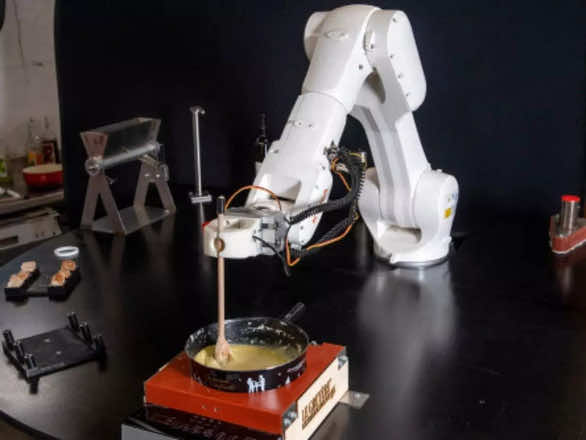Peeling a banana may appear straightforward to humanity, but it necessitates a level of dexterity that most robotic arms lacked. It wasn’t until recently that a robot was able to easily peel bananas. They have to use ‘machine learning to do this. In other terms, the computer had to pay close attention to how the living beings accomplished this in order to properly recreate it. A banana presents a significant obstacle for robotics, both physically for the robot’s “clutches” and mentally for the “brain,” where machine learning algorithms must consider several complicated features. We can see this amazing wonder in this youtube video given below:
Heecheol Kim and a team of researchers at the University of Tokyo created a machine learning model capable of evaluating the banana and allowing a linked robot with two arms and two fingers to grasp and strip it. The experts accomplished this by having a person peel a banana for 811 minutes. During that time, digital learning practiced the activity, breaking it down into parts such as lifting it up, gripping the tip, stripping it, and lifting the banana to remove parts of the skin.
The outcome demonstrates the complexity of this endeavor, yet there is still a long journey to go before the robots can peel a banana as quickly as we can. As per the testing, the robot was 57 percent of the time competent to peel the banana without breaking it in less than 3 minutes. Those in charge are pleased that this robot only needs roughly 13 hours of data to understand how to accomplish the work, as compared to traditional machine learning processes that support hours and hours and immensely strong GPUs. The banana peeling mechanism might well be enhanced; the management can be better and time can be saved.

They argue, nevertheless, that this innovation should not just be utilized for bananas, but for other sorts of complicated activities requiring tremendous accuracy on the end of the machine. According to the University of Tokyo research group, this robot prototype will be created in the upcoming weeks for use in systems requiring delicacy and agility. Another robot model has garnered considerable attention from technological aficionados in the last week. A Swiss technological development team has created a robot named Bouebot that can manufacture cheese sauce by itself. In this way, people may operate the robot or quickly activate the robot’s autonomous mode.


